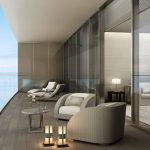When considering the decoration of your living room or den, the primary furniture item that typically comes to mind is the sofa. The furniture item in question is typically the largest within the room and experiences the highest level of utilization. Choosing the appropriate sofa can pose a significant challenge due to various factors. The following guidelines will assist you in making informed decisions regarding fundamental factors such as size and shape. This will enable you to proceed directly to the enjoyable aspects of selecting the color and intricate details, culminating in the gratifying experience of relaxing on your newly acquired couch.
Get cozy and figure out what your sofa is all about. Size matters, too!
The purpose of a sofa is primarily for seating. However, it is important to consider other factors when choosing the right sofa. Will I also be using it for napping? Will it be used on a daily basis or only when I have guests over? Can my pets and kids be on the sofa? Will it accommodate the entire family for movie nights or just a friend and me? Answering these questions will help me determine the best sofa for my needs.
In addition to functionality, size is a crucial aspect to consider. For instance, a 96-inch sofa that can fit the whole group might not be practical in a small 70-square-foot room. As a general rule, the sofa should be about two-thirds the width of the wall it will be placed against. However, there is flexibility in this guideline. If I plan on forgoing end tables, I have the option to choose a larger sofa. It is also important to consider the flow of traffic in the room. Ideally, there should be a minimum of 30 inches of space between the sofa and any walls or furniture that people need to navigate through.
Furthermore, it is essential to take into account the size of doorways, halls, and stairways when selecting a sofa. As seen in the iconic scene from Friends, where they shout “Pivot!” while moving a sofa, most sofas can be partially disassembled by removing the legs, for example.
Sofa specifics
After taking measurements of your space, creating a room layout, and deciding on the purpose of your sofa (whether it’s for lounging, napping, entertaining, or all of the above), it’s now time to examine the particular characteristics of your ideal sofa.
• Arms.
If you often use a sofa arm as a backrest while you stretch out to read or watch TV, you may want to consider having arms that are moderately padded. Alternatively, you can ensure you have a comfortable throw pillow nearby. Additionally, wide armrests can serve as seating options when you have guests over, and they can also be used as a surface for holding snacks and beverages. On the other hand, slender or sloped arms, or even no arms at all, can create a sense of openness and make a room feel more spacious.
• Back height.
It is evident that seat backs with greater height offer enhanced support for individuals of taller stature. A sofa with a lower back, such as a chesterfield or a tuxedo style, is more suitable if you intend to position it in the middle of a room rather than against a wall. This arrangement will prevent the sofa from visually dividing the space. Sofas featuring lower backs have the potential to create an illusion of increased ceiling height in spaces with lower ceilings.
• Cushions vs tight seat or back.
A tight seat or tight back configuration refers to a sofa design where separate seat or back cushions are absent, as the cushioning is integrated into the sofa structure. One significant advantage of a tightly fitted seat and/or back is its enhanced aesthetic appeal, as it maintains a neater and more sophisticated appearance compared to loose cushions that may occasionally shift and move. Furthermore, it is worth noting that a tight-back sofa generally offers a firmer seating experience compared to a sofa with loose cushions. However, it is commonly observed that individuals often perceive a sofa with distinct cushions to offer enhanced comfort for leisurely activities. Additionally, sofas of this nature tend to exude a more casual and relaxed aesthetic compared to those featuring a tightly upholstered seat or backrest. Additionally, if your sofa is equipped with reversible cushions, it is advisable to periodically flip them over to enhance their durability. This practice can also be beneficial in the event that one side becomes torn or stained.
• Fabric.
When it comes to stains, it is advisable to take into account the presence of pets, children, or individuals prone to spills in your household. Additionally, if you enjoy consuming beverages such as red wine or hot chocolate while relaxing on your sofa, it would be wise to consider upholstery that is resistant to stains. Look for options such as performance fabric, Crypton, or Sunbrella, or alternatively, opt for a sofa that comes with a washable slipcover. Leather is a favorable option due to its easy cleanability and odor resistance. Additionally, many individuals appreciate the patina that develops on leather over time and with regular use. To prevent potential damage caused by your pets, it is advisable to refrain from using fabrics with nubby or looped textures, such as bouclé, on your couch. These types of fabrics are susceptible to being pulled by their claws.
What are the distinctions between a sofa, settee, and sectional?
In contemporary terminology, a settee is commonly referred to as a compact sofa. Settees, also known as love seats, typically have a maximum width of 70 inches and are designed to accommodate two individuals, hence the term “love seat.” In a compact space, these pieces can effectively serve as a sofa. Additionally, they can be conveniently placed at the end of a bed, in an entryway, or as a substitute for a dining banquette.
A sectional sofa is comprised of two or more individual sections. The most frequently encountered configurations include L-shape, U-shape, and sofa with chaise. Typically, the components of a sectional can only be arranged in one specific configuration. Therefore, it is advisable to carefully consider options such as a left-facing sectional with chaise or an oversized U-shape sectional if you anticipate moving in the near future. These choices may not be suitable for a room with different dimensions or layout. To enhance flexibility, it is advisable to consider the option of a modular sofa. Modular sofas, which are a subset of sectionals, are comprised of multiple pieces that offer versatile configurations.






